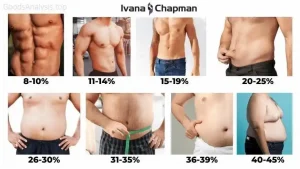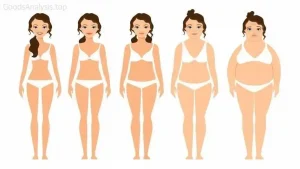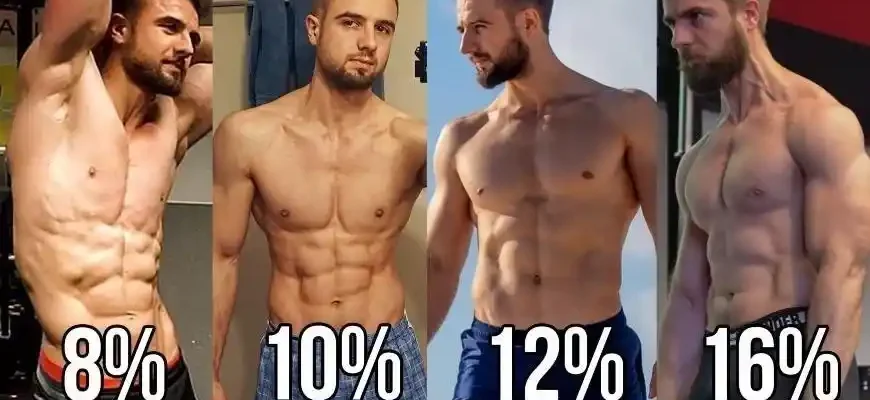When we talk about health and fitness, body fat percentage is one of the most essential metrics to understand. But what is it exactly? And why should you care? Well, knowing your body fat percentage gives you much more insight than just your weight on the scale. It helps you understand how much of your body is composed of fat versus lean mass (muscles, bones, organs, etc.). This knowledge can guide you in making better decisions about your fitness, diet, and overall health.
In this guide, we’ll break down everything you need to know about calculating body fat percentage—from the most accurate methods to the ones that are more accessible to the average person. We’ll also highlight the potential pitfalls of measuring body fat and provide practical advice on how to navigate them.
Why Body Fat Percentage Matters
Before we dive into the “how,” let’s first look at the “why.” Why is body fat percentage such a critical metric?
Health Implications: Excess fat, especially visceral fat (the fat around your organs), is linked to a higher risk of heart disease, diabetes, and other chronic conditions. On the flip side, too little fat can affect your hormone balance and immune function.
Physical Appearance: Body fat percentage can give a more accurate picture of your physique than weight alone. Someone who has a high muscle mass but a low body fat percentage may appear more toned and fit, even if their weight is higher than average.
Performance and Fitness: Knowing your body fat percentage can help track your fitness progress. For athletes, maintaining an optimal body fat percentage can be crucial for peak performance.
Now that we’ve established why it’s important, let’s look at how to measure it.
Methods for Calculating Body Fat Percentage
There are several ways to measure body fat percentage, and some are more accurate (and expensive) than others. Here’s a breakdown of the most common methods:
1. Skinfold Calipers (Pinch Test)
This is one of the most accessible methods, and many gyms offer it. Skinfold calipers are used to pinch the skin at specific sites on the body (typically around the triceps, abdomen, and thighs). A trained professional measures the thickness of the skinfolds, and those measurements are plugged into an equation to estimate body fat percentage.
Pros:
- Inexpensive and widely available.
- Can be done at home with practice.
Cons:
- Accuracy depends on the skill of the person performing the test.
- It’s difficult to measure body fat in areas like the back or chest without assistance.
Who’s it good for?
- People who are comfortable with a bit of discomfort and who want a quick estimate.
2. Bioelectrical Impedance (BIA)
BIA devices use a small electrical current that passes through the body to estimate body fat percentage. Most modern body scales use this method. The idea is that electrical current passes more easily through lean tissue (muscles, water) than through fat. Based on the resistance, the device calculates an estimate of your body fat percentage.

Pros:
- Easy to use—just step on a scale.
- Non-invasive and fast.
Cons:
- Results can vary depending on hydration levels, time of day, and other factors.
- Less accurate compared to more sophisticated methods.
Who’s it good for?
- People who want a quick and convenient estimate but understand that it’s not 100% precise.
3. Dual-Energy X-ray Absorptiometry (DEXA)
This is one of the most accurate methods for measuring body composition. A DEXA scan uses low levels of X-ray radiation to measure bone density, lean mass, and fat mass. It’s often used in clinical settings, especially for research purposes.
Pros:
- Very accurate.
- Provides a detailed breakdown of fat, lean mass, and bone density.
Cons:
- Expensive and often not covered by insurance.
- Requires you to go to a clinic or imaging center.
Who’s it good for?
- People seeking highly accurate measurements, such as athletes or those under medical supervision.
4. Hydrostatic Weighing (Underwater Weighing)
This method is considered the “gold standard” of body fat measurement. It works by measuring your body weight underwater and calculating the volume of water displaced. From this, the proportion of fat to lean mass is estimated.
Pros:
- Extremely accurate when done correctly.
- Often used in scientific studies.
Cons:
- Expensive and less accessible.
- Requires full submersion in water, which might be uncomfortable for some people.

Who’s it good for?
- Athletes or those who need the highest accuracy and are willing to go to a specialized facility.
5. 3D Body Scanners
A newer method, 3D body scanners create a detailed 3D image of your body, estimating body fat percentage based on your body shape and volume. The technology has improved in recent years, but it’s still not as widely available as some of the other methods.
Pros:
- Non-invasive and relatively fast.
- Provides detailed body shape information.
Cons:
- Still not as precise as DEXA or hydrostatic weighing.
- May be expensive or require a visit to a specialized center.
Who’s it good for?
- Anyone interested in a detailed body scan without the invasiveness of other methods.
Ideal Body Fat Percentage: What’s Healthy?
Now, what’s the “right” body fat percentage? Well, that depends on your sex, age, and fitness goals. But here are some general guidelines:
For Men:
- Essential fat: 2-5%
- Athletes: 6-13%
- Fitness: 14-17%
- Acceptable: 18-24%
- Obese: 25% or higher
For Women:
- Essential fat: 10-13%
- Athletes: 14-20%
- Fitness: 21-24%
- Acceptable: 25-31%
- Obese: 32% or higher

Note: Women naturally have a higher percentage of body fat than men due to reproductive needs, so their ranges are different.
Common Pitfalls and How to Avoid Them
While body fat percentage measurements can be valuable, they aren’t perfect. Here are a few common pitfalls to be aware of:
- Hydration Levels: Dehydration can affect methods like BIA, leading to inaccurate results. Make sure you’re well-hydrated before taking any measurement.
- Time of Day: Your body fat percentage can vary throughout the day due to food intake, exercise, and hydration. Try to measure at the same time each day, ideally in the morning before eating.
- Inconsistent Measurements: Different methods and devices may give you different results. The key is to track your measurements over time to observe trends, rather than focusing too much on one single reading.
How to Improve Your Body Fat Percentage
If you’re looking to lower your body fat percentage (or even increase it in some cases), there are several approaches:
- Exercise: Combining strength training with cardiovascular exercise is one of the best ways to reduce body fat while building muscle. Aim for at least 30 minutes of moderate activity most days of the week.
- Nutrition: A healthy diet, rich in whole foods (vegetables, lean proteins, healthy fats), is essential for fat loss. Reducing your intake of refined sugars and processed foods can make a big difference.
- Sleep and Stress: Don’t underestimate the impact of sleep and stress management. Both affect your metabolism and hormones, which can influence body fat levels.
- Consult a Professional: If you’re serious about improving your body fat percentage, consider working with a personal trainer, nutritionist, or a medical professional to create a tailored plan.
Real Opinions on Body Fat Percentage
- Linda, 57, USA: “I started tracking my body fat percentage when I hit 50. It’s been a great way to see how my body has changed. I’ve lost weight, but my focus is on maintaining lean muscle. The scale doesn’t tell me the full story, but my body fat percentage does.”
- Javier, 36, Mexico: “I use a BIA scale at home. I know it’s not the most accurate, but it gives me a good idea. I’ve been working on lowering my body fat, and the number is steadily decreasing. I also make sure to hydrate well before measuring.”
- Sophia, 45, UK: “I’ve tried DEXA scanning, and it was an eye-opener. I had no idea how much visceral fat I had. I’ve made lifestyle changes since, and I’ll keep checking every six months. The results are motivating.”
- Hiroshi, 28, Japan: “I don’t worry too much about body fat percentage; I just focus on my performance and strength training. But I do check it every few months. Right now, I’m in the athletic range, and I feel great.”
- Amira, 65, Egypt: “I’ve always been skeptical about body fat percentage. At my age, I just want to feel healthy. I get it measured, but I don’t obsess over the number. It’s about how I feel day to day.”
Conclusion
Understanding body fat percentage is a powerful tool in your health journey, offering more insight than just weight alone. Whether you’re using a BIA scale at home, undergoing DEXA scans, or doing the pinch test with calipers, the key is consistency and understanding the limits of each method. Keep









